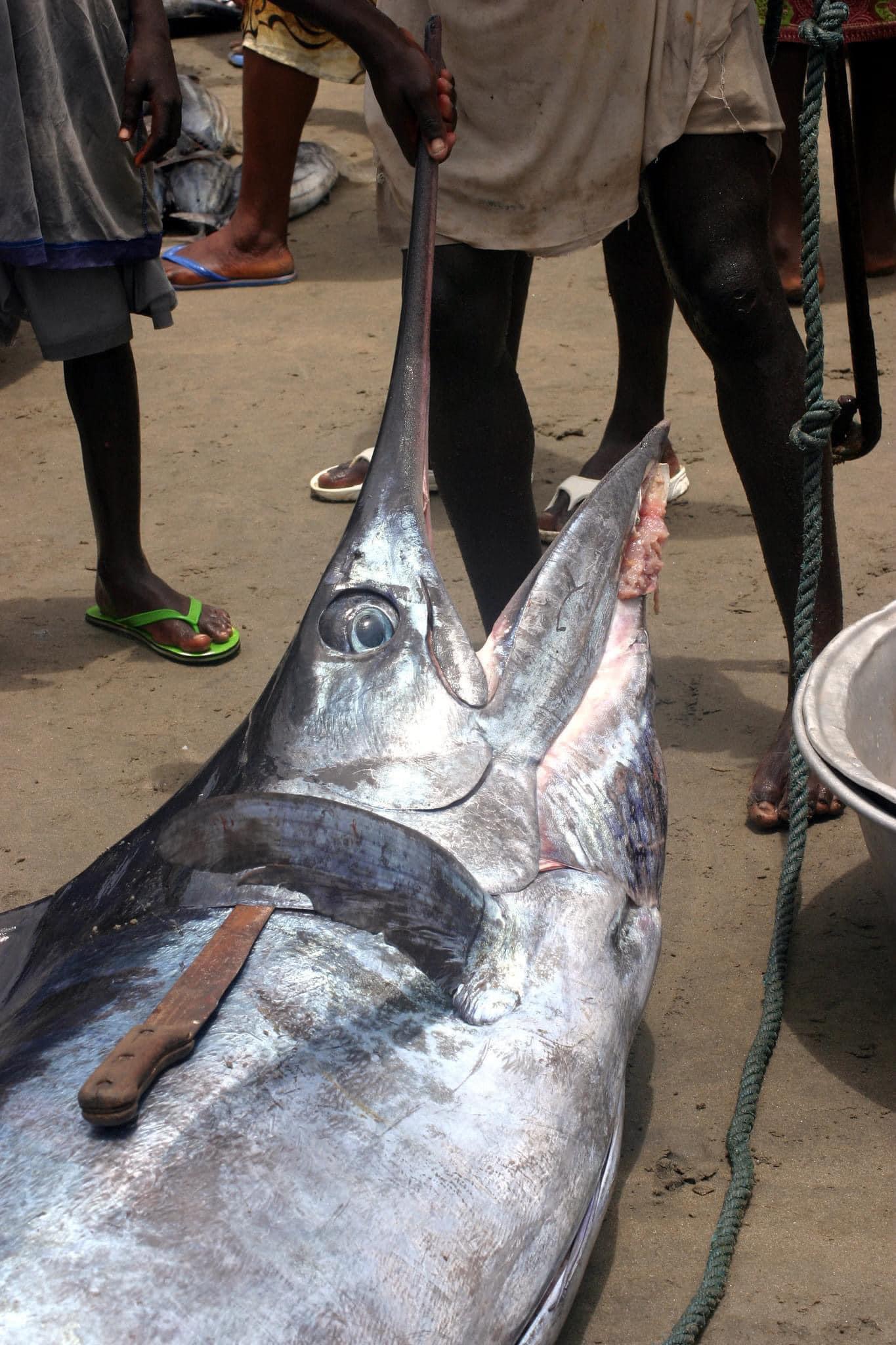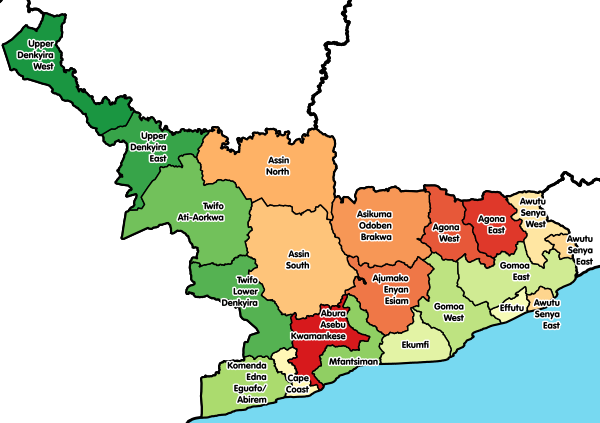In Apam, our fishermen made a remarkable catch at sea, reeling in a rare blue marlin.

The blue marlin is a large and powerful fish known for its speed, strength, and distinctive appearance. Here are some key characteristics:
1. Appearance: Blue marlins are recognized by their elongated bodies, a spear-like upper jaw, and a tall dorsal fin. They typically have a cobalt blue color on top and a silver-white underside.
2. Size: They are one of the largest species of marlin, with females (the larger of the sexes) capable of reaching lengths over 14 feet and weights up to 2,000 pounds. Males are generally smaller, usually not exceeding 300 pounds.
3. Habitat: Blue marlins are found in the tropical and subtropical waters of the Atlantic, Pacific, and Indian Oceans. They prefer deep, open ocean environments.
4. Diet: They are carnivorous, feeding on a variety of fish and squid, using their spear-like bill to stun or injure prey.
5. Reputation: The blue marlin is highly regarded in sport fishing due to its size, speed, and fighting ability, making it a sought-after trophy fish.
Economic Value
The worth of blue marlin can vary significantly based on several factors such as size, condition, and the market (commercial or sport fishing). Here’s an overview from least to most valuable:
1. Small Blue Marlins (up to 100 pounds):
• Commercial Market: Smaller marlins are generally not targeted in commercial fishing due to lower meat yield. If caught, they might fetch a modest price, often less than $10 per pound.
• Sport Fishing: As a sport fish, smaller marlins are typically released rather than kept. Their value lies more in the experience and the sport than in their market price.
2. Medium Blue Marlins (100-500 pounds):
• Commercial Market: These can have a moderate commercial value, especially in regions where marlin meat is popular. Prices can range from $10 to $20 per pound, depending on the quality of the meat and market demand.
• Sport Fishing: Medium-sized marlins are highly prized in sport fishing tournaments and can command significant entry fees and prize money for successful catches.
3. Large Blue Marlins (500-1,000 pounds):
• Commercial Market: Large marlins can be valuable commercially, potentially reaching prices of $20 to $30 per pound, especially if the fish is in prime condition.
• Sport Fishing: These fish are extremely valuable in sport fishing circles, often featured in prestigious tournaments where prize money can range from tens to hundreds of thousands of dollars.
4. Giant Blue Marlins (over 1,000 pounds):
• Commercial Market: While large marlins have significant meat yield, their commercial value can be tempered by the practicality of handling such large fish. Prices can vary widely, but a prime specimen might fetch $30 or more per pound.
• Sport Fishing: Giants are the ultimate prize in sport fishing, with some tournaments offering million-dollar purses for record-breaking catches. These fish often gain legendary status among sport fishers.
Notable Points
• Conservation: There is a growing emphasis on catch-and-release practices in sport fishing to help conserve marlin populations.
• Record Catches: The value and fame of catching a record-breaking blue marlin can far exceed the actual monetary value of the fish itself due to sponsorships, media coverage, and personal prestige.
In summary, the blue marlin’s worth varies greatly depending on the context and market, ranging from modest commercial values to extremely high sport fishing values, especially for record-sized catches.
Credit: Asafo Flags










